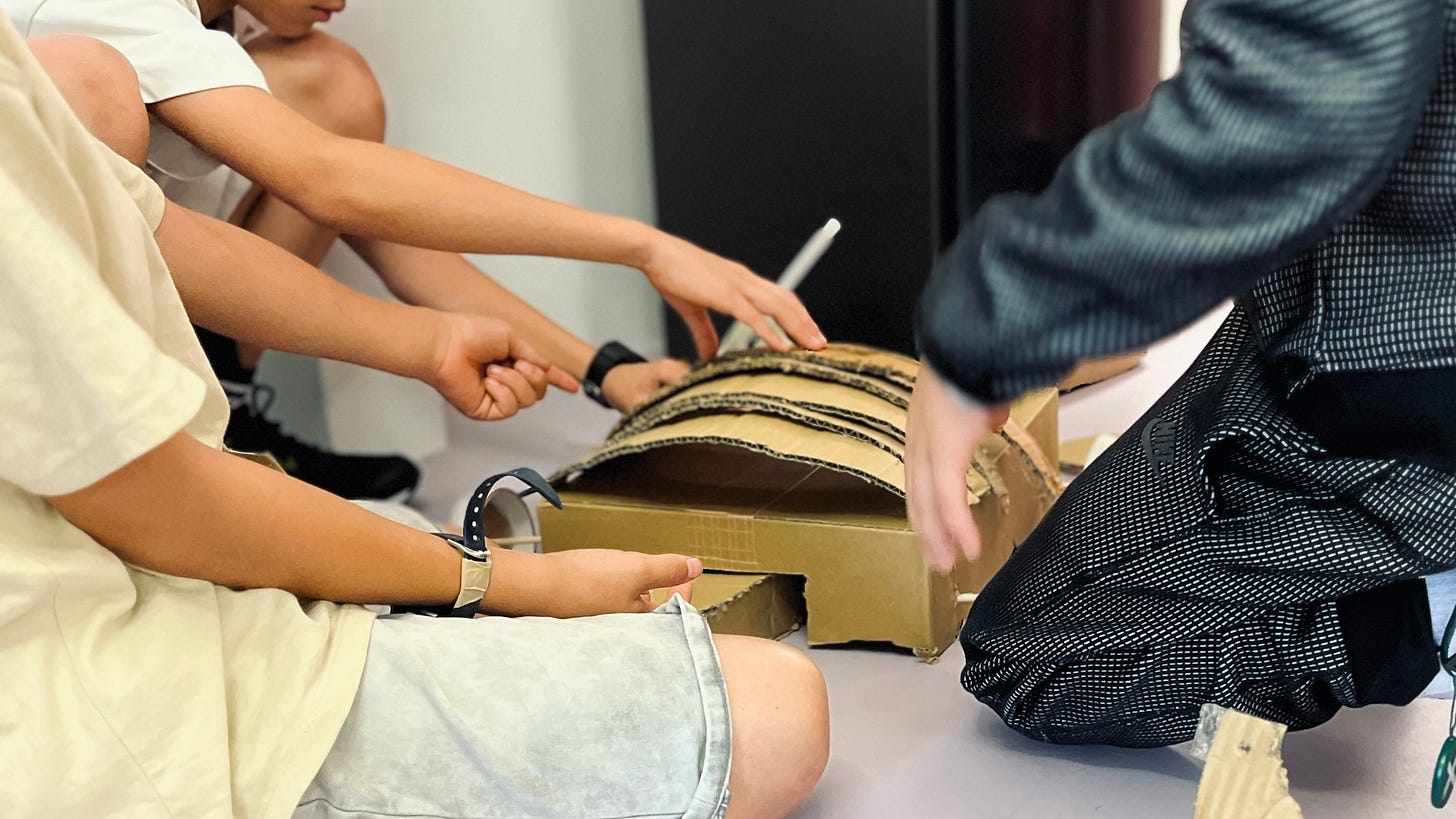Last month I had the absolute joy of collaborating with Saki, one-half of Studio Playfool, again. We first worked together in Tokyo, where this newsletter was born, and also where we met.
This time we were running Young V&A's inaugural Summer Design Club for young people 11-14 years old (we ended up having a 10 and 9-year-old but working with young people is always about improvisation so we made it work). The 2-day workshop was grounded in Studio Playfool's ongoing project investigating non-human intelligences. Given the growth and prevalence of AI, we wanted to explore how we might begin to decenter ourselves when talking about intelligence and explore other ways of perceiving the world by crafting new creatures and habitats.
I have not worked with 11 to 14-year-olds in a long time and I was so curious about where their minds and bodies were at with the topic of AI and its accompanying technologies. How do they perceive intelligence beyond humans and machines? How do they measure intelligence? What about intelligence embodied in animals, insects, fungi etc? What sort of new creatures will they create? Will this be too abstract for them?! Will we have time to make creatures from cardboard and for it not to look like a pile of trash?! (the constant challenge of working with cardboard, iykyk) While I am a firm believer of process > product, I also believe that the product is crucial for the kids to be able to reflect on and appreciate the process. It's hard to hear an adult wax lyrical about growth and learning and making when the thing you made looks like trash 🫣 Much like the concept of childhood–children often don't recognise childhood because they are living through it. We talk about childhoods retrospectively. They don't care about having a good childhood, they care about being a child right now.
Although there are important lessons to be gleaned from mismatched expectations, we have found that it was so valuable for the kids to learn how to elevate their creations (e.g learning about hinges and fundamental cardboard construction methods for stability) because then they are proud of being able to translate their imaginations into reality. We can then talk about the process after that. For someone obsessed with documentation, in the chaos of the two days, I completely forgot to take photos of their creations, so you will have to wait for a future broadcast when I have received the photos from the museum team.
That said, I want to share some highlights of their process that I did document, moments that we picked up and shared with the young people afterwards because we were proud of what they did and these were important moments even if they may not realise it.
One of the participants was a Taiwanese boy visiting London for summer and didn’t speak much English and this was his teammate was very patiently showing him how to make little aliens with pipe cleaners. Not pictured: their intermittent nods and smiles.
A very thoughtful curation of colours and textures from another group that were building a forest habitat.
Teamwork + autonomy! Makedo tools were such a game-changer for me—seeing young people cut cardboard without waiting on adults for help with a penknife!!
Very proud of the moment when this group insisted on their vision of what their armadillo look like. Their initial idea was one that I could envision, and I was so sure it was the ‘better’ way to do it but of course, they put me in my place and showed me that they knew what they were doing. A lesson for my ego, always.
This group of young people were phenomenal, so engaged, so curious, so ready to challenge and debate–“A roomba is not intelligent because even though it can be programmed to clean your house, it can only do that one thing and nothing else. Maybe a bee is intelligent...but it depends on the role I guess, if you are a queen bee maybe not, but if you are a worker bee then you are intelligent?” “A mushroom is VERY intelligent because it has a whole network of communication with the forest!”. They designed an incredible space and gave a guided tour for their parents on the final day. Lots more of these little sparks, but I will leave that for another broadcast.
Thank you for being here, I hope you find intelligent non-human beings in your surroundings today 💭
Some reading related to non-human intelligence if you are interested!
An Aeon essay on how other creatures solve problems
James Bridle’s book: Ways of Being (also available in Libby to borrow for free!)





